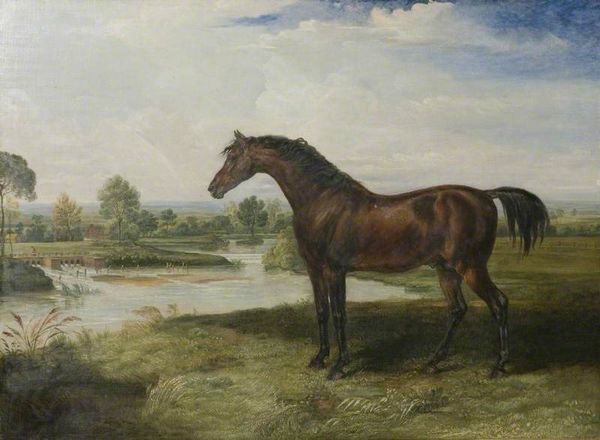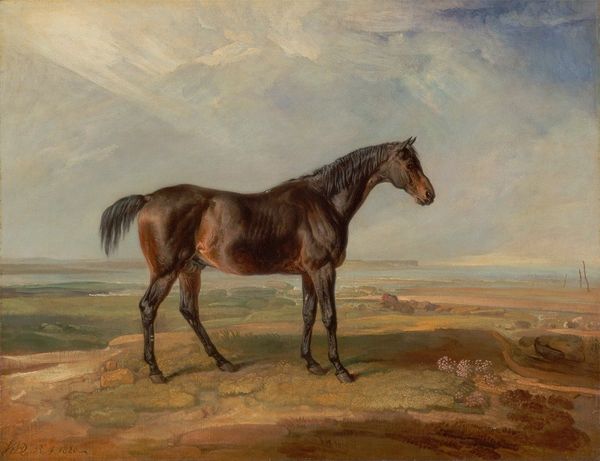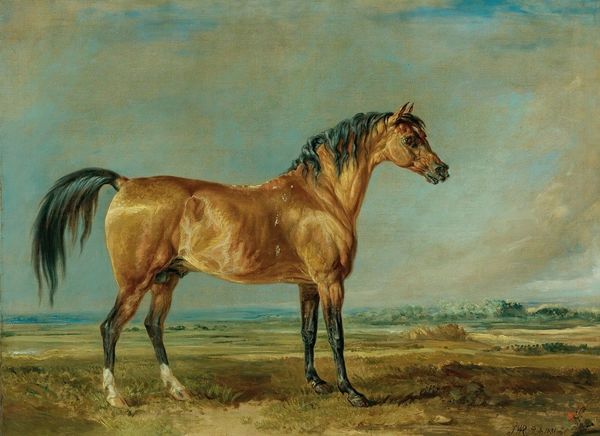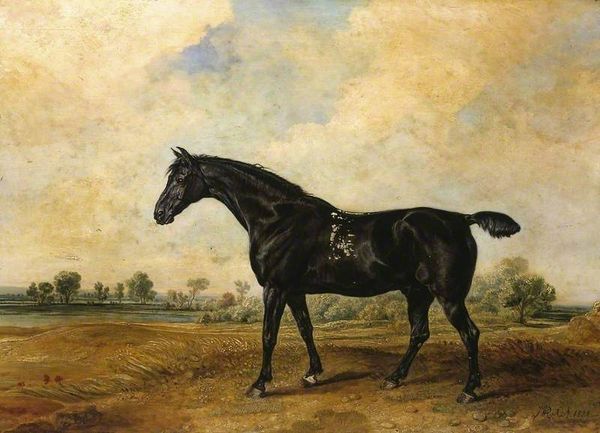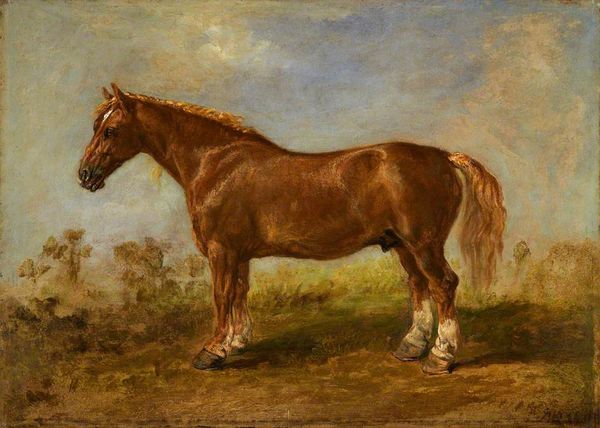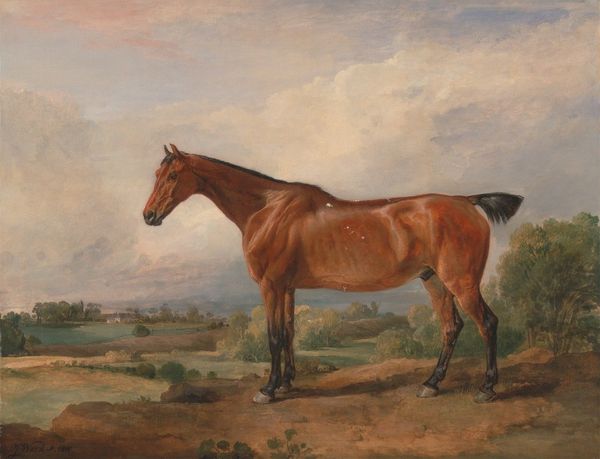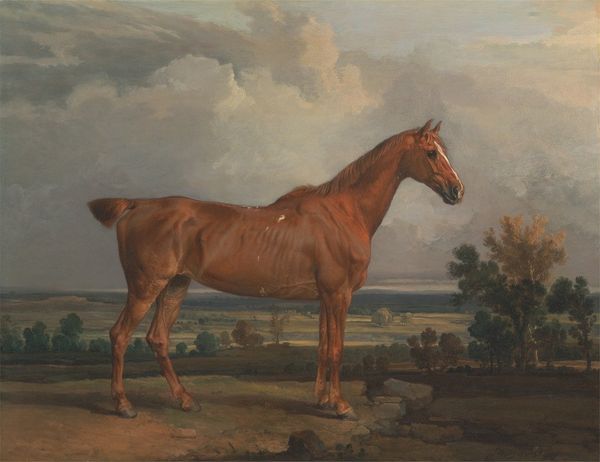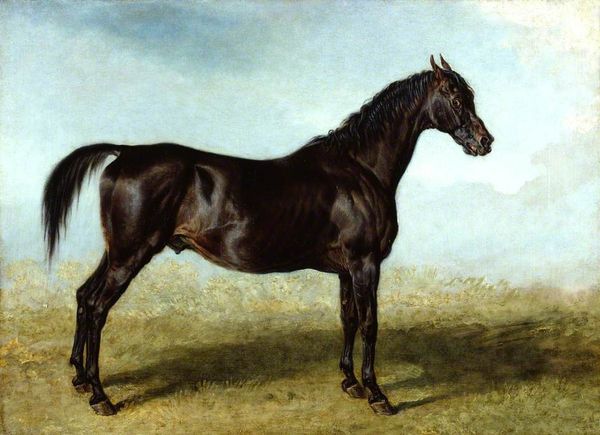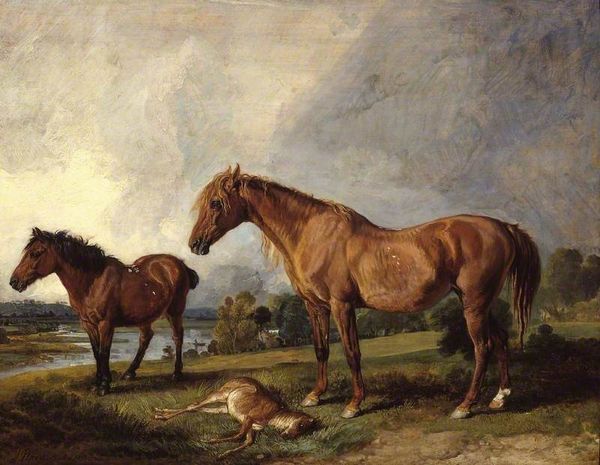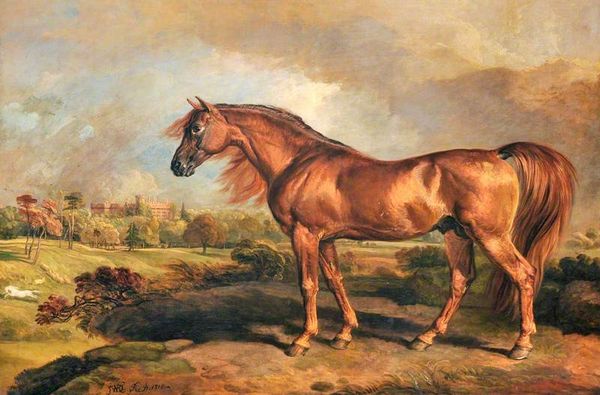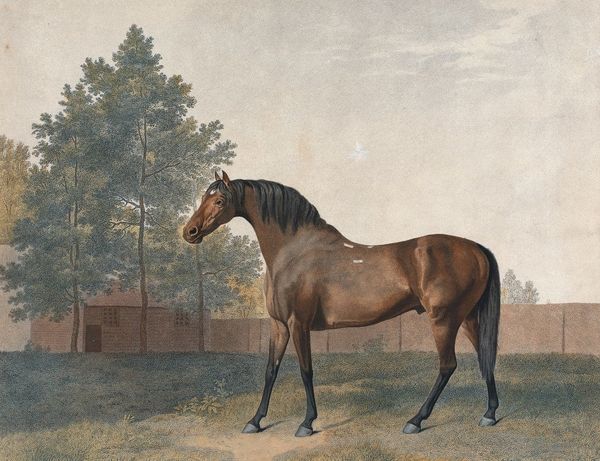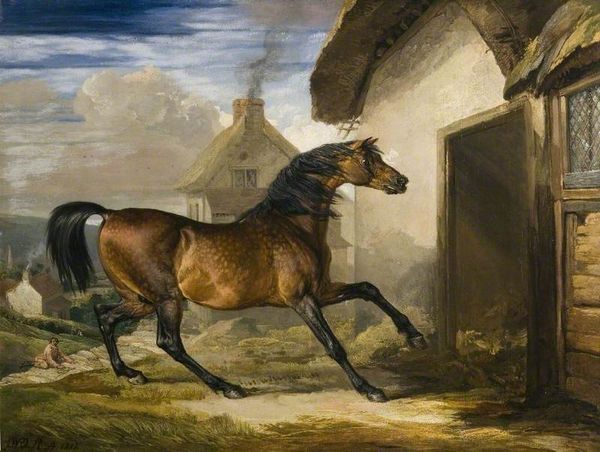
oil-paint
#
portrait
#
oil-paint
#
landscape
#
figuration
#
oil painting
#
romanticism
#
animal portrait
#
horse
#
realism
Copyright: Public domain
Curator: Standing before us, we have James Ward’s oil painting, “Dr Syntax,” created in 1821. Editor: There's a pervasive tranquility in this work; it captures a very specific stillness. I find it rather elegant. Curator: Ward masterfully utilizes a muted palette. The landscape’s subtle tonalities draw the eye gently across the canvas, emphasizing the form and surface of the horse in the foreground. It exemplifies his ability to integrate portraiture with romantic landscape elements, a prevalent style of the period. Editor: Agreed. Notice how the handling of paint defines muscle and bone – each brushstroke, it seems, contributes to this elegant equine’s physique. Given Ward's animal paintings in particular, his family's background in meat butchering seems to imbue a particular awareness of the animals form. Curator: A fascinating interpretation. It's intriguing to note the implied social context surrounding such works at the time, indicative of agricultural development that necessitated reliable breeds. Also observe the almost monochromatic use of shades. This restrained palette compels focus onto form and compositional structure, the triangulation of space through the relationship of horizon to animal. Editor: Absolutely. The production involved, of course, the gathering of pigments from possibly far-flung locations. Its consumption as well, by an owner class, also reflects a particular ordering of power. Beyond that, note the seemingly quickly-painted landscape; there are subtle material clues of production speed, compared to the almost academic rendering of the main subject. Curator: Well put. His romantic sensibility combined with what almost veers towards representational precision certainly speaks volumes about the era's aesthetic negotiations. Editor: Yes, precisely. Considering the interplay between artist, patron, and the socio-economic undercurrents, we glimpse how art acted not just as a visual delight, but an item of value entangled in material processes. Thank you for highlighting this! Curator: And thank you for illuminating the processes involved in crafting not only the painting, but a possible narrative around it.
Comments
No comments
Be the first to comment and join the conversation on the ultimate creative platform.
